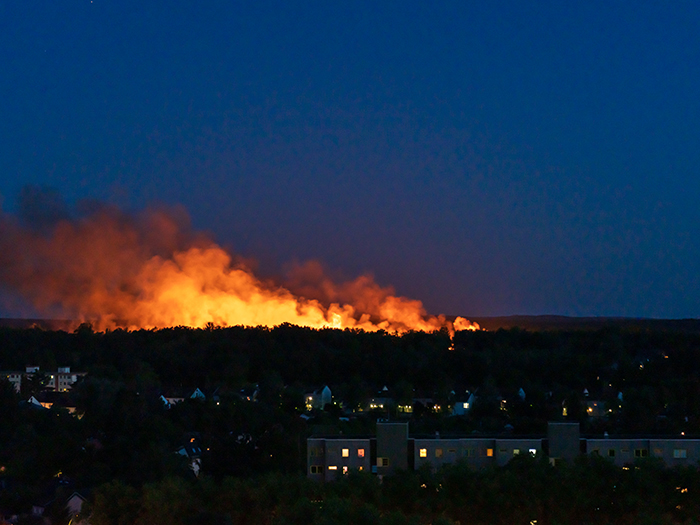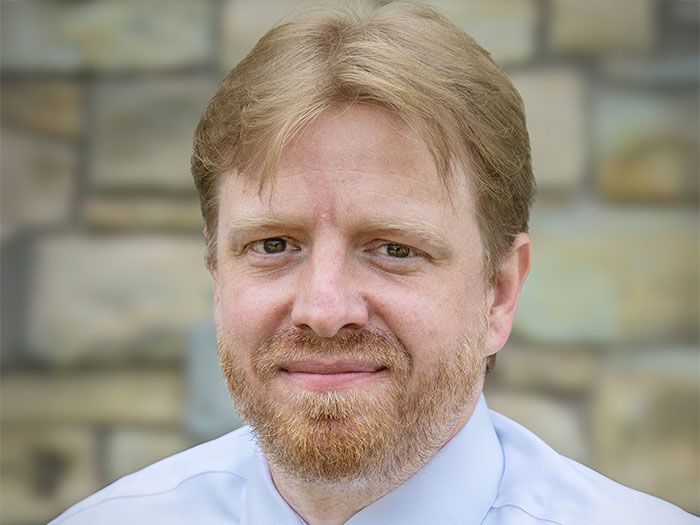Wildfire Prevention Innovators Vie for $11 Million Prize

Pacific Gas & Electric Co. has been experimenting with a range of new tools to reduce the risk of wildfires caused by its equipment in California, a liability that tipped the company into bankruptcy in 2019.
Now, as the threat of wildfires continues to grow, the utility is backing an ambitious $11 million effort to build the next generation of tools for spotting and dousing potentially destructive blazes.
That effort is the XPRIZE Wildfire competition, sponsored by the same group based out of Culver City, California that’s credited with helping seed the private sector space industry. The competition’s cosponsors include PG&E, Lockheed Martin, the Gordon and Betty Moore Foundation, and the Conrad N. Hilton Foundation.
The global, four-year contest aims to develop technology that can pinpoint small wildfires over massive areas and dispatch autonomous vehicles to put them out within minutes.
“XPRIZE isn’t the solution to all problems,” said Andrea Santy, program director for XPRIZE Wildfire. “But there are certain places where we really think that it can move the needle significantly, and this is one of them.”
Disasters Drive Search
Interest in better wildfire detection and suppression is growing in the wake of massive fires in California and Australia, costly disasters that are expected to become more common as climate change makes some areas drier and hotter.
PG&E filed for bankruptcy in the face of claims totaling billions of dollars after it was linked to several wildfires over the last few years.
One, the 2018 Camp Fire in Northern California, was ignited by a faulty electric transmission line and went on to claim more than 80 lives and destroy more than 18,000 structures, according to the California Department of Forestry and Fire Protection.
Another fire, the 2020 Zogg Fire in California’s Shasta County, led to a fine of $150 million from the California Public Utilities Commission. The company has also agreed to pay $45 million to Shasta County under an agreement that includes dismissal of criminal charges related to the fire, which started after a tree fell onto a PG&E distribution line. Four people died in the fire.
To minimize wildfire risks, businesses and governments have been exploring numerous technologies, according to a 2022 state of firetech report sponsored by the Wildfire Technology Funders Group, a collection of philanthropists, corporations and impact investors.
The Biden Administration voiced its support of the cause in a February 2023 report that recommended, among other things, creating a new office to carry out a science- and technology-based strategy for combating wildfires, similar to strategies used for national defense.
At PG&E, new tools include a combination of satellite imagery and land-based cameras to keep watch over fire-prone areas, said Paul Doherty, a spokesperson for the Oakland-based company. Other tools include new sensors to detect problems on electrical lines and artificial intelligence to enhance the ability of the company’s fire-detecting cameras.
The utility has also worked with a Spanish company called Technosylva to provide regularly updated models of where and how fires might spread, enhancing PG&E’s ability to plan ahead, Doherty said.
But while it has made progress in detection and modeling, the company sees room for improvement in the autonomous detection and suppression of wildfires, Doherty said.
Some wildfires occur naturally, of course, so another challenge is determining which ones can be allowed to burn, said Genevieve Biggs, program director for the wildfire resilience initiative and special projects for the Gordon and Betty Moore Foundation, based in Palo Alto, California.
“That means we need more precise, earlier, accurate, higher-resolution and cost-effective detection capabilities; we need to understand where fire is burning at low to moderate severity and having a beneficial impact, and where fire is burning at high severity with potentially detrimental impacts for ecological integrity and community safety,” Biggs said.
A Dual Focus
XPRIZE Wildfire is tackling the challenge on two tracks.
On one track, called Autonomous Wildfire Response, teams will be competing to develop a system that can monitor an area of 1,000 square kilometers (or 386 square miles), detect fires, and autonomously suppress them within 10 minutes of detection.
Most wildfires are still spotted on the ground, often by people who call 911, Santy said. In the best-case scenario, it can take 15 to 45 minutes for firefighters to reach and control a conflagration.
“That time, with certain fires, with certain weather and different conditions, is just way too long,” she said. “And we know that research has shown that early detection could be a complete game changer.”
Indeed, according to a study by the Australian National University, early detection of bushfires could save the Australian economy up to AU$8.2 billion over the next 30 years, even after accounting for a 15% to 30% increase in fires.
The second track — Space-Based Wildfire Detection & Intelligence — will pit teams working to accurately detect all fires in a landscape bigger than a state or country in under a minute, then characterize and report the data within 10 minutes to two ground stations, all while minimizing false positives. Those could come from things like campfires or smokestacks.
XPRIZE is also intent on developing solutions that are user-friendly, Santy added, noting that the competition’s judges will include firefighters.
Teams Already Forming
The competition is open to individuals, businesses and university teams from around the world. As of late May, 81 teams representing 24 countries had expressed interest in the contest, according to Santy. The registration deadline for the space-based track is August 31, while the deadline for the autonomous response track is October 31.
Once teams register, they will have six months to submit a technical report outlining what they plan to do, Santy said. Judges will then select the solutions they believe are best suited to go into testing, which will occur in phases.
As part of its process, XPRIZE expects it will combine teams that have complementary solutions, Santy said. “We anticipate matchmaking happening, and then teams being able to get to these end solutions by joining forces.”
The winning team for each track will take home $3.5 million, Santy said. But XPRIZE will be handing out another $1.5 million per track in milestone awards to the teams with the most promising technologies. Lockheed Martin, which has a unit focused on technology to fight wildfires, is kicking in another $1 million as a bonus prize for teams on either track that develop accurate detection tools.
One firm expecting to compete for the prize money is Alchera, a South Korean company with roots in facial-recognition technology. After a visit to California during fire season three years ago, the company’s South Korean and U.S. CEOs — Young Hwang and Jin Hong — decided it should try to do something about the issue, according to Michael Plaksin, vice president of marketing for the company’s U.S. arm, Alchera X.
The result is a program called FireScout, which uses facial recognition software installed in cameras to detect smoke plumes, said Plaksin, who believes the detection technology can already achieve what XPRIZE is looking to do.
He expects Alchera will work with other participants to marry its detection tools to autonomous firefighting solutions, which could include drones.
“We are excited to enter the XPRIZE competition to help expand our technology and services worldwide,” Plaksin said. &











